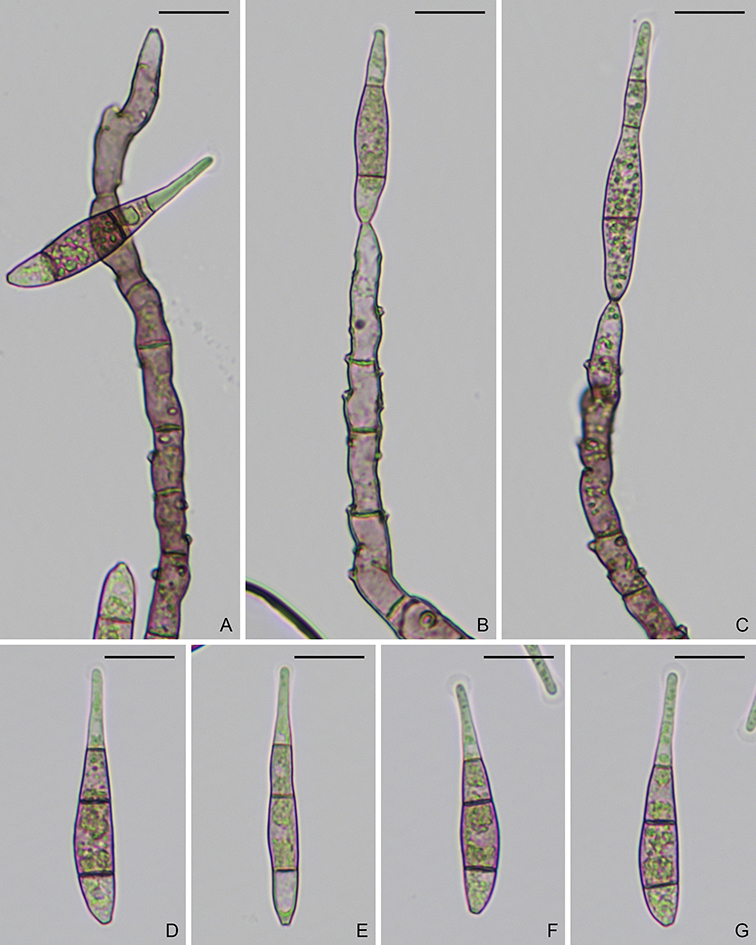Budhanggurabania cynodonticola P. Wong, Khemmuk & R.G. Shivas, Persoonia 34: 241. 2015. (Type species).
MycoBank: MB 811697.
Ascomata perithecial, superficial, solitary, ampulliform, periphysate, dark brown to black, 300–400 × 200–350 µm, with a short neck, 75–100 × 70–80 µm. Asci 8-spored, obovoid to saccate, ascus wall deliquescent at maturity within ascomata releasing ascospores that extrude from ostiole, 50–75 × 25–35 µm. Ascospores multi-seriate, ellipsoidal with rounded ends, 3-septate, slightly constricted at each septum unequally colored, 25–38 × 10–15 µm; central cells brown, with 4–6 oblique striations in lateral view; apical cells 3–6 µm long, subhyaline to light brown, smooth. On QPDA and PDA, hyphae septate, branched, smooth, 1–3 µm diam. Conidiophores single or branched, hyaline. Conidiogenous cells phialidic, straight to slightly curved, hyaline, 5–29 × 1.5–3 µm. Conidia aggregated in slimy heads, cylindrical or slightly curved, apex rounded, base acute, aseptate, hyaline, smooth, 5.5–9(–12) × 1.5–2 µm (Description from Crous et al., 2015).
Typification: Holotype BRIP59305. Ex-holotype culture BRIP59305.
Gene sequences: KP162130 (18S), KP162134 (ITS), KP162140 (28S), KP162131 (MCM7), KP162143 (RPB1), KP162138 (TEF1).
Hosts/substrates: On rotted roots and stolons of Cynodon dactylon (Poaceae).
Distribution: Australia (Northern Territory, Queensland).
Copyright 2022 by The American Phytopathological Society. Reproduced, by permission, from Luo, J., and Zhang, N. 2022. The Rice Blast Fungus and Allied Species: A Monograph of the Fungal Order Magnaporthales (https://my.apsnet.org/APSStore/Product-Detail.aspx?WebsiteKey=2661527A-8D44-496C-A730-8CFEB6239BE7&iProductCode=46826). American Phytopathological Society, St. Paul, MN.Â
